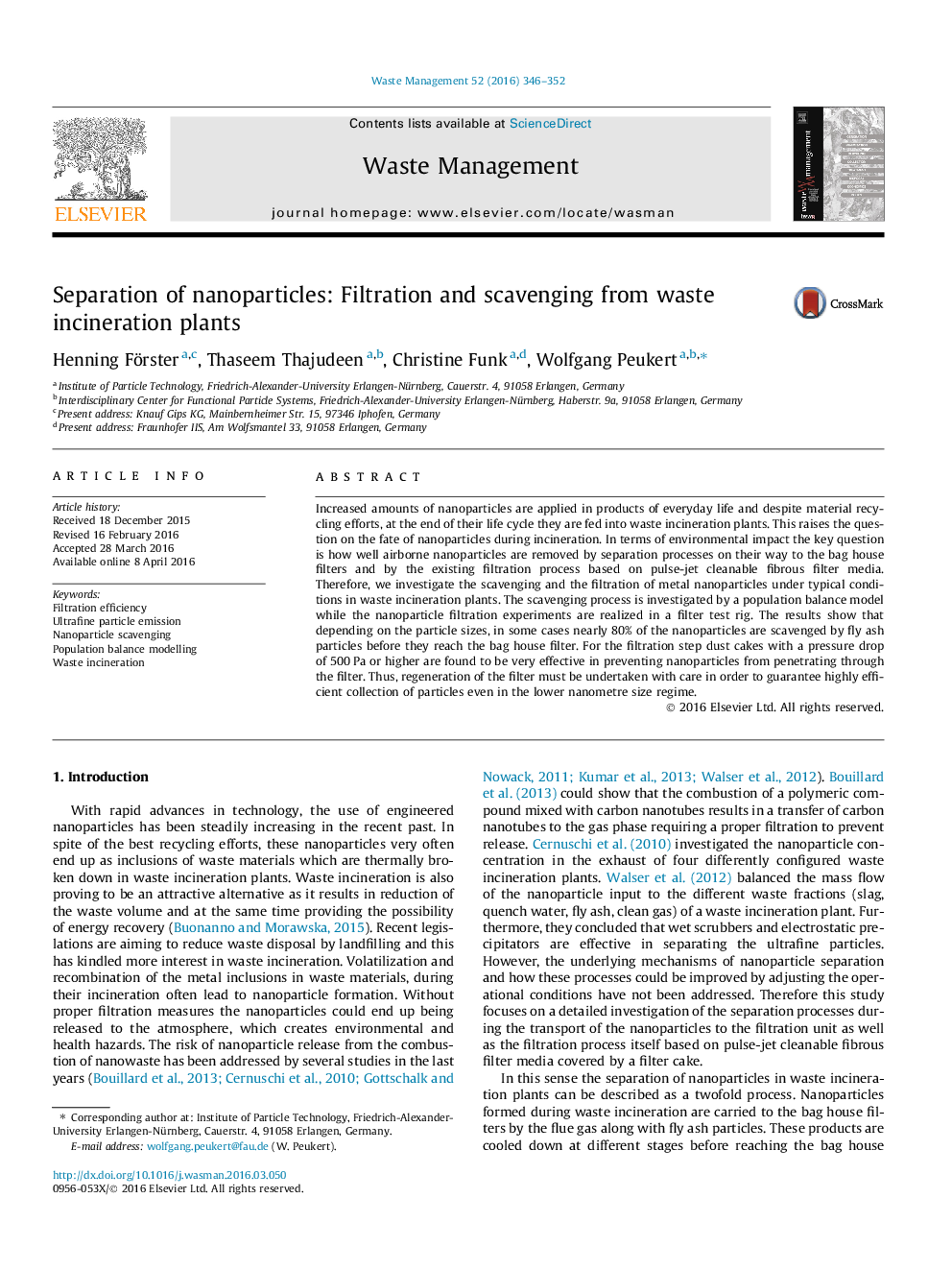| Article ID | Journal | Published Year | Pages | File Type |
|---|---|---|---|---|
| 4471257 | Waste Management | 2016 | 7 Pages |
•The effect of scavenging in removing ultrafine particles in waste incinerators is studied.•Cake dust filters are used to mimic bag house filters in actual plants.•The effect of temperature, face velocity and pressure drop on filtration efficiency is investigated.•Emission of nanoparticles is possible only immediately after pulse jet cleaning of filters.
Increased amounts of nanoparticles are applied in products of everyday life and despite material recycling efforts, at the end of their life cycle they are fed into waste incineration plants. This raises the question on the fate of nanoparticles during incineration. In terms of environmental impact the key question is how well airborne nanoparticles are removed by separation processes on their way to the bag house filters and by the existing filtration process based on pulse-jet cleanable fibrous filter media. Therefore, we investigate the scavenging and the filtration of metal nanoparticles under typical conditions in waste incineration plants. The scavenging process is investigated by a population balance model while the nanoparticle filtration experiments are realized in a filter test rig. The results show that depending on the particle sizes, in some cases nearly 80% of the nanoparticles are scavenged by fly ash particles before they reach the bag house filter. For the filtration step dust cakes with a pressure drop of 500 Pa or higher are found to be very effective in preventing nanoparticles from penetrating through the filter. Thus, regeneration of the filter must be undertaken with care in order to guarantee highly efficient collection of particles even in the lower nanometre size regime.
Graphical abstractFigure optionsDownload full-size imageDownload as PowerPoint slide
